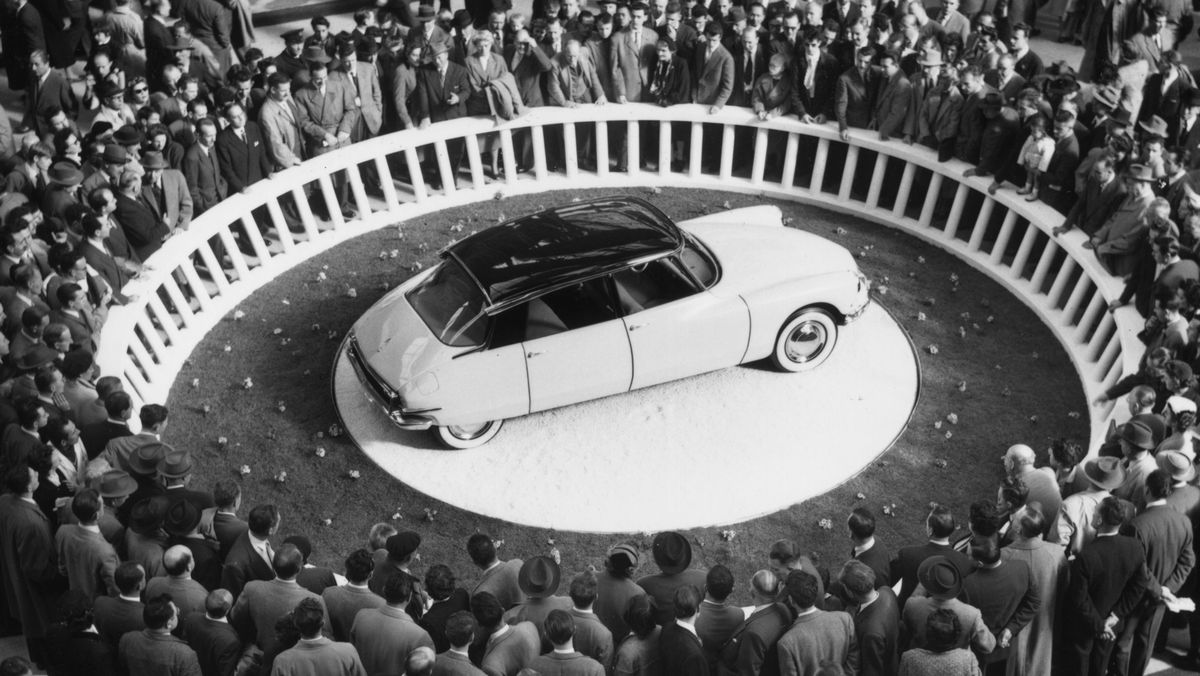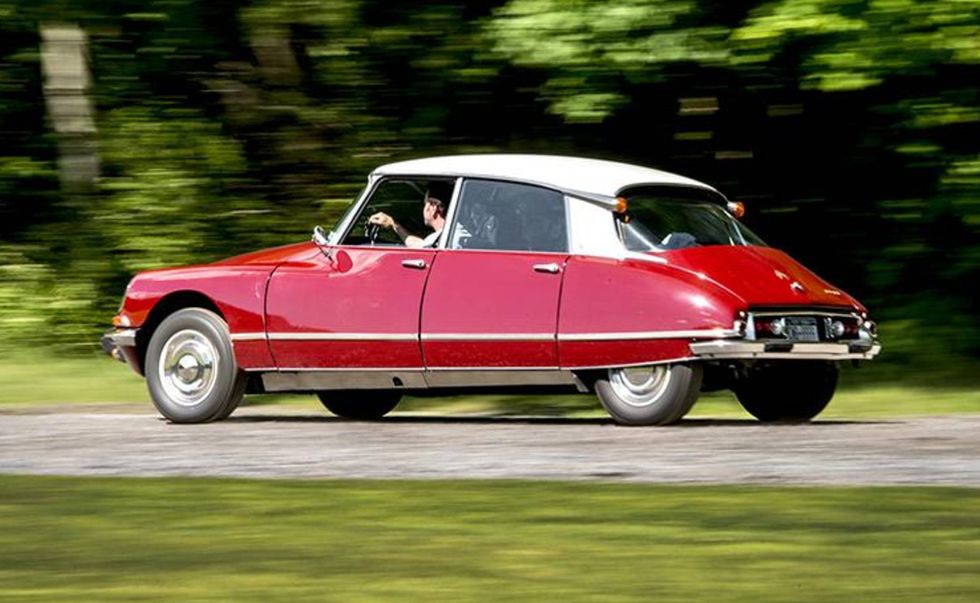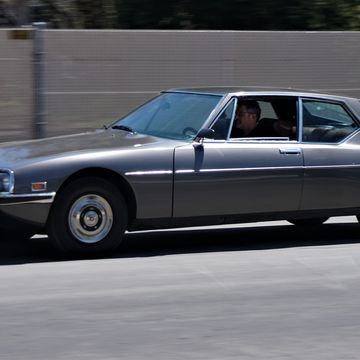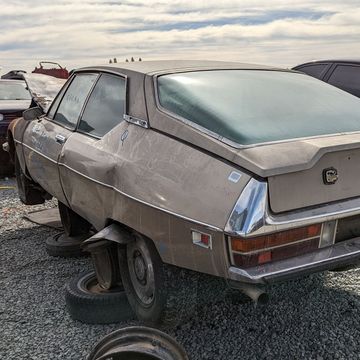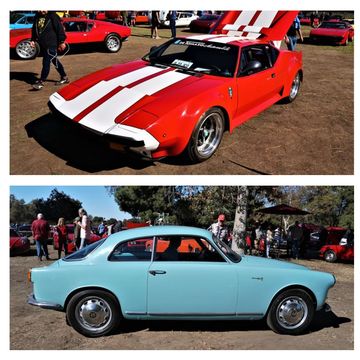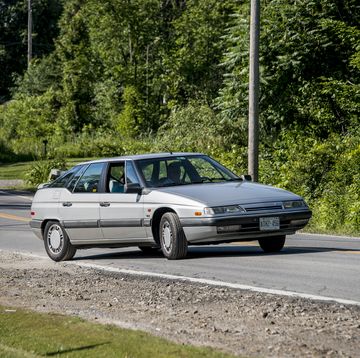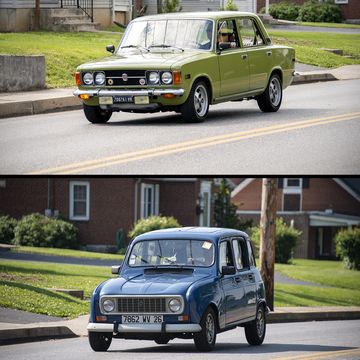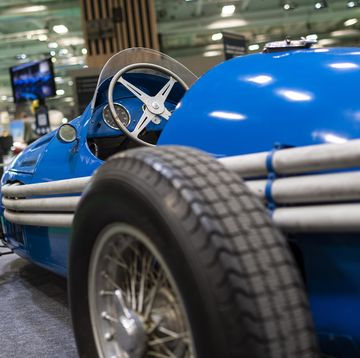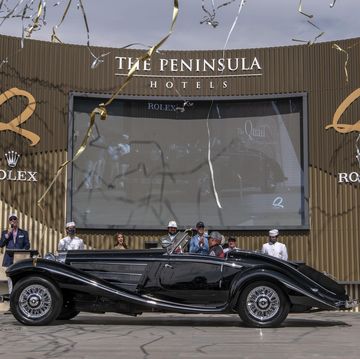- The Citroën DS had an odd shape, with virtually no rear overhang and a rear track much narrower than the front that resulted in a narrow tail.
- Its new central hydraulic system—powering the steering, brakes, gearchange, clutch, and the suspension—was the technical highlight of the car.
- On that first day at the 1955 Paris auto show, Citroën wrote 12,000 orders for the DS.
When I was a kid growing up in the early 1960s and just becoming aware of all the different kinds of cars, it was at a time when all imports were known as “foreign cars,” and there was no car more foreign to me than the Citroën DS.
Back then, my visual ideal of what a car should look like was very much American, with the lower, wider, longer proportions still very much in vogue, and nothing had more styling—underscored every year with the annual styling change.
The Citroën, in contrast, didn’t play by any of the rules I understood. It had an odd shape, with virtually no rear overhang and a rear track much narrower than the front that resulted in a narrow tail that had those weird high mounted turn signals.
The front wasn’t any better, with bug-eye lamps and no grille, creating, I thought, a frog-like apparition. In my still-developing understanding of automotive design, this was not just another foreign car, but an alien object, which I just found spooky.
Hey, I was 9 years old—what did I know?
So many years later, my perspective has changed: If this car isn’t on your list of the greatest cars of all time, your understanding of milestone automotive design is incomplete.
The DS, introduced in 1955 at the Paris Auto Show, was about as close to reinventing the wheel as an automobile can get. The streamlined body was obviously unlike anything at the time, and totally different from the Traction Avant, a pre-war design, that it replaced.
But it was its new central hydraulic system, powering the steering, brakes, gearchange, clutch, and the suspension that was the technical highlight of the car.
That suspension, fully independent at all wheels, was a hydro-pneumatic system that was also self-leveling. Adding to the mix was the first use of production disc brakes, mounted inboard at the front, and given that the company was owned by Michelin, the first use of radial tires.
The one area where the car was not all new was the engine. Originally it was envisioned with an air-cooled flat-six, which would have been technically appropriate for a car that embraced radical engineering solutions.
But teething problems led to the use of a variation of the old Traction Avant 4-cylinder engine, resulting in the one criticism that would plague the DS through most of its life—that despite its wind-cheating shape, it didn’t have much performance.
The result of all this technical wizardry was a car that rode and drove like no other. Even today, the way a DS ignores bumps in the road is uncanny, achieving what was aptly described as the “magic carpet” ride. Even conservative Rolls-Royce licensed the technology for the self-leveling rear of the then-new Silver Shadow in the mid ‘60s.
Citroën built the DS and its ID variant for 20 years, ending production in 1975. During that time, they sold over 1.5 million units. Numerous updates and refinements happened over the lifespan of the car, including a wagon and (very expensive) cabriolet variants. Despite these changes, the car remained very true to its original design—still recognizable, even after two decades, as the iconoclastic vehicle its visionary creators had designed at the start.
Fifty years after Citroën stopped importing cars to the US and almost as long since the real DS ended production, why is it still important to acknowledge this car? (Peugeot, which currently owns Citroën, revived DS in 2009 as a separate brand.)
Few manufacturers today would have the courage or be so foolhardy to take on so many technical challenges on just one vehicle. And this was at a time when France and Europe were still rebuilding and recovering from WWII.
Compared to the more modest and traditional cars other manufactures were producing then, the Citroën DS was an absolute moon shot, a technical and design spaceship that showed the world what France could achieve and what the future should look like. And on that first day at the 1955 Paris show, Citroën wrote 12,000 orders for them.
In 2009, Classic & Sports Car magazine asked some of the most accomplished and influential European automotive designers to judge what they thought was the most beautiful car of all time. They chose the DS. My 9-year-old self won’t let me quite agree with that, but I see much clearer now than I did then.
And to see the DS in its entirety—with a shape inspired not by fashion but by aerodynamics, its brilliant mechanical innovation, and in the context of what existed when it was created—is to understand just how significant and revolutionary this car truly was.
Dave Rand (pictured right) is the former executive director of Global Advanced Design for General Motors.
